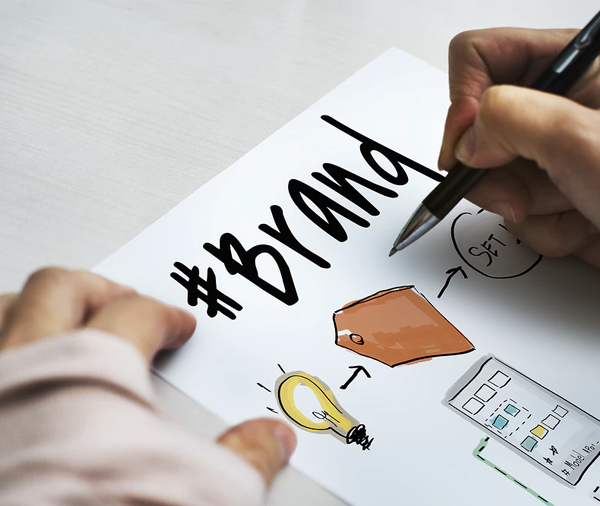‘There are three responses to a piece of design – yes, no, and wow. Wow is the one to aim for’ – Milton Glaser
Designing creative, effective and appealing logos is an art, but presenting it to clients is another. The response of your client on the logo highly depends on how you present and deliver it, and you wouldn’t want any stone unturned, after your tireless designing efforts.
![]()
It can get frustrating to keep wondering if the client will like your design or not. Some designers spend a lot of time tweaking the logo, to make sure it’s perfect and that the client will love it. This article explores eight steps to help get your logo accepted every time, without any trouble.
‘There is no such thing as a bad client. Part of our job is to do work and get the client to accept it’ – Bob Gill
Review the Client’s Business and Your Logo Again

It is essential to go through the business again and revise how it resonates with the logo you have designed. Often designers feel confident and ready to present the logo because they made it just yesterday and it is fresh in their minds. However, the chances are that you are not as thorough in the business values and positioning as the client would like you to be.
If the logo is delivered via email, considering referring to some articles, press releases or advertisements of the brand and sharing their links. This will validate your background research and make the client rely on your design opinions.
Explain the Concepts behind the Logo

Every logo is designed after thoroughly analyzing the brand and its offerings. The aim is to represent the positioning of the brand through its logo and to communicate the brand message effectively.
Before presenting the logo, briefly tell the client about the ideas and thoughts you had in your mind when designing the logo. For example, you may want to say to the client that you wanted to reflect the vibrant personality of the company with bright colors or the organic ingredients with green. This helps the client know the rationale behind the color scheme, strokes, shapes, text, and other aspects.
It also fosters a positivity in the client’s mind, knowing that the designer understands and cares for the brand.
Present Different Variants of the Logo

As much as clients want a logo that does not require any changes, they like their ideas and opinion to be incorporated into the design. As a smart graphic designer, you must accommodate the client’s ideas without further delaying the work.
Consider taking more than one variants of the logo, such as in monochrome and different colors. You may also want to show two or more sizes of the logo so that the client can make the final decision.
However, it is vital to give your advice and select the version you recommend. The client must not think of you as an indecisive designer.
Explain Potential Effects of the Logo

Now that the logo is ready, the client would want to know how it will help the brand progress and nurture. As a designer, you may feel that it isn’t your responsibility to bring in sales for the company. But, it is your job to design a logo that takes forward the brand’s message and values effectively to the customers.
Tell the client how the design will help achieve the brand’s vision. Focus on how different people will perceive the brand when looking at the logo. For example, talk about what an unaware customer would think of the brand, how loyal customers would feel about it and so.
Sound Professional and Experienced

It is essential for a designer to sound professional when delivering the logo to the client. Show that you take work seriously and have invested your time and energy in developing the logo. Make sure that the files are saved in different formats, and a proper zip file is maintained. Make it simple and easy for the client to view the work or include detailed guidelines if any file requires an unusual application to open.
‘If we want users to like our software, we should design it to behave like a likable person: respectful, generous and helpful’ – Alan Cooper
Insist on Your Design

‘One important key to success is self-confidence. An important key to self-confidence is a preparation’ – Arthur Ashe
Reflecting confidence and faith in your designs is important. Subtly remind the client of your experience and understanding of designing concepts. Remember that your technical expertise will help the client and it is your job to convey it.
If the client recommends otherwise, give your expert opinion and tell him what you think about it.
Listen to the Client’s Reservations

Despite all your efforts and hard work, the client may have some concerns. He knew his brand better and had some expectations from the logo. Keep an open mind and leave room for discussion, encouraging the client to give his valuable opinion without getting offended or impatient.
The client may want a different color, text or an entirely different logo. It is your job to accommodate the changes and present the logo again. Also, let the client when you resubmit the design.
Track the Changes for the Client

Once you have accommodated the changes in the logo, send it to the client and inform him objectively of the changes. You may want to submit the original logo along, so it is easier for the client to see the difference.
If the new logo looks better, then appreciate the client’s suggestion and thank him for helping you in developing an effective logo.
You may also want to use the logo on different products of the client to graphically present the implications. It will increase the chances of acceptance.
‘ Good design is obvious. Great design is transparent ’ – Joe Sparan
